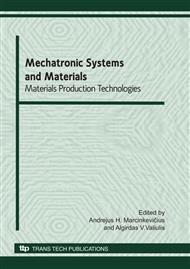p.91
p.97
p.104
p.110
p.118
p.124
p.130
p.136
p.142
Properties of Duplex Stainless Steel Surface Layers after Burnishing Process
Abstract:
This paper investigates stress corrosion cracking resistance of cold worked layers of 25 Cr duplex stainless steel grade UR52N+. The surface layers were processed through burnishing treatment. The residual stresses at surface layers were determined using grazing angle incidence X-ray diffraction method (g-sin2 Ψ). Corrosion tests were performed with the use of Slow Strain Rate Test technique in boiling 35% MgCl2 solution. It has been demonstrated that burnishing treatment increases corrosion resistance of the steel. Stress corrosion cracking resistance depends on the magnitude of cold work at surface layers. High level of cold work diminishes corrosion resistance.
Info:
Periodical:
Pages:
118-123
Citation:
Online since:
June 2010
Authors:
Price:
Сopyright:
© 2010 Trans Tech Publications Ltd. All Rights Reserved
Share:
Citation:


